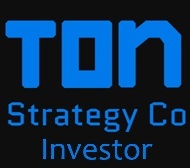My two cents. SaaS revenue is a train you can
Post# of 33178
SaaS revenue is a train you can see from a mile away if you know what to look for in my opinion. Starts out slow for most SaaS companies until you have the boxcars lined up on the tracks that keep coming
From Q3: "Added 16 new client contracts with a combined minimum contract value of $1.1 million – a record for new contracts executed in a single quarter."
"What I’d like to highlight is that those contracts are expected to generate annual recurring revenue of approximately $500,000 ."
From Q2: Added 12 new client contracts with a guaranteed base value of $715,000 and expected annual recurring revenue of $405,000 . However, those numbers do NOT include the expanded revenue we expect to recognize from existing clients who have recently launched and those that are about to launch verbLIVE with Attribution, which should add not less than an additional $1 million, conservatively, in annual recurring revenue.
So contractually, if all things were equal, SaaS revenue itself would go up 25%, but life doesn't work that way. First you have to onboard the customer. Even before that, you might have to do some integration or custom development. This is why Jeff also said
"New SaaS contracts typically also produced an increase in non-SaaS digital revenue, such as digital design fees that we are permitted to recognize as that work is completed quickly after the execution of new client contracts during the quarter . As such, the digital design work associated with all new Q3 contracts generated increase in our non-SaaS digital revenue which produced an increase in net revenue as a percentage of total digital revenue. As I just mentioned, we added 16 new client contracts with a guaranteed base value of $1.1 million. What I’d like to highlight is that those contracts are expected to generate annual recurring revenue of approximately $500,000."
This means Q3 could generate $600K of non-SaaS digital revenue more or less or they already did. I didn't look.
What is always hard to gauge is what if any of the non-SaaS, new client contracts already hit Q3, what is hitting Q4 or even Q1.
Same with SaaS revenue. How fast are the clients getting onboarded?
Let's say NewAge has up to 600,000 distributors and Market America has 100,000. How many are using the app and when? If I was doing a deal with Microsoft as an example to buy 600K users O365, I would negotiate the pricing, but I may ask for a 'ramp' with the fees, as it might take me 6-12 months to deploy O365. Why pay millions in month one, if I haven't deployed the apps internally to 100% of the users?
That is literally the pain at the beginning of a SaaS journey, but now Verb has added 12 boxcars in Q2 and 16 in Q3 the pain goes away. Also with every SaaS company you may lose a few old boxcars as retention is never 100%.
Now here comes the wildcards
In Q3, the company said they already had a few thousand users using VerbLIVE, but a number of companies were waiting for some additional features before launching. You can't recognize that revenue until they launch.
The other wild card is Verb announced in Q3 their new professional services division. I would think this is to do the custom development and integration customers want along with professional design work, content creation, etc that they've been doing. As that grows, it will bring in significant revenue faster than the SaaS training that takes months sometimes.
One of the challenges Verb had in the past was ramping down the non digital revenue. If one was an investor that did DD, one probably would have got it, but the casual meme investor would be clueless, this was done by design. So while the company has been growing, the intentional decline of one revenue source perceptually impacted the other.
You're waiting for a train, a train with a big pile of money. You know where you hope this train will take you, but you can't know for sure when. But it doesn't matter.

 (17)
(17) (0)
(0)